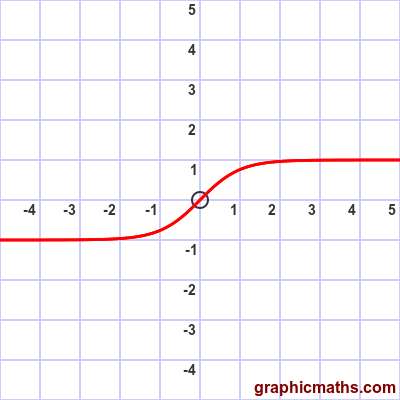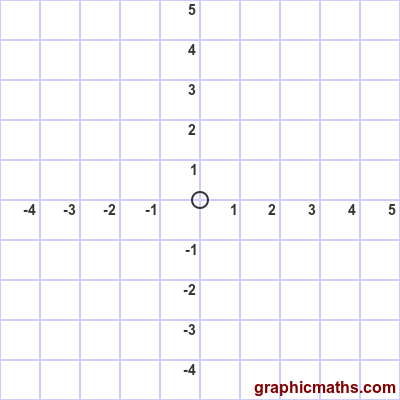tanh function
Categories: hyperbolic functions pure mathematics

The tanh function is a hyperbolic function. It is also known as the hyperbolic tangent function.
Here is a video that explains sinh, cosh and tanh:
Equation and graph
The tanh function is defined as sinh divided by cosh:
$$ \tanh{x} = \frac{\sinh{x}}{\cosh{x}} $$
Here is a graph of the function:

An alternative equation is:
$$ \tanh{x} = \frac{e^{x}-e^{-x}}{2} \times \frac{2}{e^{x}+e^{-x}} = \frac{e^{x}-e^{-x}}{e^{x}+e^{-x}} $$
tanh as sinh divided by cosh
The tanh function involves two functions, $\sinh{x}$ divided by $\cosh{x}$. This animation illustrates this:

When $x$ is zero, $\sinh x$ is 0 and $\cosh x$ is 1, so the result is 0.
As $x$ gets larger, as the animation shows, $\sinh x$ and $\cosh x$ become ever closer is value, although $\sinh x$ is always slightly smaller. The value of $\tanh x$ therefore tends towards 1.
When $x$ is large and negative, $\sinh x$ becomes ever closer to $-\cosh x$. The value of $\tanh x$ therefore tends towards -1.
Other forms of the equation
If we take the equation:
$$ \tanh{x} = \frac{e^{x}-e^{-x}}{e^{x}+e^{-x}} $$
and multiply top and bottom by by $e^{x}$ we get:
$$ \tanh{x} = \frac{e^{2x}-1}{e^{2x}+1} $$
See the similar derivation for the sinh function
An alternative form is obtained by multiplying top and bottom by by $e^{-x}$:
$$ \tanh{x} = \frac{1-e^{-2x}}{1+e^{-2x}} $$
See also

Join the GraphicMaths Newletter
Sign up using this form to receive an email when new content is added:
Popular tags
adder adjacency matrix alu and gate angle area argand diagram binary maths cartesian equation chain rule chord circle cofactor combinations complex polygon complex power complex root cosh cosine cosine rule cpu cube decagon demorgans law derivative determinant diagonal directrix dodecagon ellipse equilateral triangle eulers formula exponent exponential exterior angle first principles flip-flop focus gabriels horn gradient graph hendecagon heptagon hexagon horizontal hyperbola hyperbolic function infinity integration by substitution interior angle inverse hyperbolic function inverse matrix irregular polygon isosceles trapezium isosceles triangle kite koch curve l system locus maclaurin series major axis matrix matrix algebra minor axis nand gate newton raphson method nonagon nor gate normal not gate octagon or gate parabola parallelogram parametric equation pentagon perimeter permutations polar coordinates polynomial power probability probability distribution product rule pythagoras proof quadrilateral radians radius rectangle regular polygon rhombus root set set-reset flip-flop sine sine rule sinh sloping lines solving equations solving triangles square standard curves star polygon straight line graphs surface of revolution symmetry tangent tanh transformations trapezium triangle turtle graphics vertical volume of revolution xnor gate xor gate